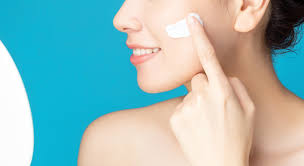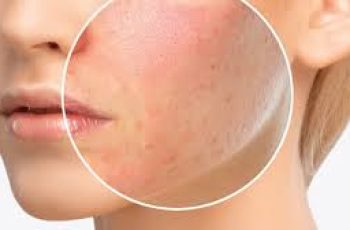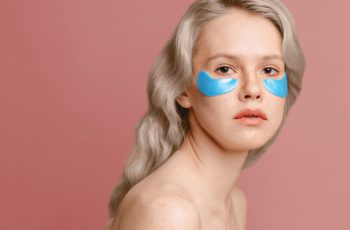
Hydroquinone in Skin Care Products: A Comprehensive Review by a Dermatologist
Hydroquinone is one of the most powerful ingredients used in dermatology for the treatment of various pigmentation issues. It is classified as a tyrosinase inhibitor, meaning it works by interfering with the production of melanin, the pigment responsible for skin color. Due to its ability to reduce melanin formation, hydroquinone is widely used in skin lightening and whitening treatments.
In this detailed article, I will guide you through what hydroquinone is, how it works, what it’s used for, its safety profile, possible side effects, and how to use it effectively under professional supervision. As a dermatologist, I often prescribe hydroquinone to treat skin pigmentation disorders, but I also stress the importance of using it correctly to avoid unwanted effects.
What Is Hydroquinone Used For?
Hydroquinone is considered the gold standard in topical depigmenting agents. It is the most potent skin lightening compound legally available in the United States, albeit only by prescription. Dermatologists commonly prescribe hydroquinone for the treatment of:
Melasma: A skin condition characterized by brown or gray-brown patches, usually on the face.
Post-inflammatory hyperpigmentation (PIH): Dark spots left behind after acne, eczema, or other inflammatory skin conditions.
Solar lentigines (age spots): Brown spots caused by sun exposure.
Freckles
Uneven skin tone
Dyschromias: General term for abnormal skin pigmentation due to melanin imbalance.
Hydroquinone Safety: Controversies and Clarifications
Although hydroquinone has been a mainstay in dermatological treatments for decades, concerns over its safety have sparked significant debate. In 2000, the European Union banned the use of hydroquinone in cosmetic products due to concerns about potential adverse effects. In several Asian countries, including Japan and South Korea, its use is strictly regulated and only allowed in prescribed formulations.
In the United States, hydroquinone was available over-the-counter (OTC) in concentrations up to 2% until the passing of the CARES Act in 2020. This legislative act reclassified hydroquinone as a prescription-only drug due to safety concerns and lack of sufficient long-term safety data for OTC use.
Does Hydroquinone Cause Cancer?
One of the biggest fears surrounding hydroquinone use is the claim that it might cause cancer. This concern largely stems from the fact that hydroquinone is a derivative of benzene, a known carcinogen. However, it’s essential to distinguish between chemical structure and biological behavior.
Animal studies have shown that very high doses of hydroquinone given orally to rats might lead to tumor development. However, these studies are not directly applicable to humans, especially considering the different metabolic pathways in rats versus humans. In humans, hydroquinone is metabolized primarily in the liver to non-toxic forms like glucuronide and sulfate conjugates, reducing its systemic toxicity.
Over 40 years of dermatological use in humans, no definitive cases of hydroquinone-induced cancer have been documented. While caution is always prudent, there is currently no conclusive evidence to suggest that topical hydroquinone causes cancer in humans when used as directed.
What Is Ochronosis and How Common Is It?
The most concerning adverse effect associated with long-term hydroquinone use is exogenous ochronosis—a rare but disfiguring skin disorder characterized by blue-black pigmentation in areas of application. This condition typically arises after prolonged use of high-concentration hydroquinone, particularly without medical supervision.
Exogenous ochronosis is more likely to occur in individuals with darker skin types (Fitzpatrick Skin Types IV–VI), and is seen more often in African, Asian, or Latin American populations. It results from the inhibition of the enzyme homogentisic acid oxidase in the skin, leading to accumulation and polymerization of homogentisic acid into ochronotic pigment.
Despite hydroquinone’s widespread use, only about 30 documented cases of ochronosis have been reported in North America. While the risk is low, this potential side effect underscores the need for appropriate medical supervision when using hydroquinone products.
Common Side Effects of Hydroquinone
Aside from ochronosis, there are other side effects users should be aware of. These include:
Contact dermatitis: An allergic or irritant skin rash may develop, often appearing as redness, itching, or peeling.
Skin dryness or irritation: Especially when combined with other actives like retinoids.
Nail discoloration: Rarely, hydroquinone can cause a brownish discoloration of the nails.
Photosensitivity: Treated skin may become more sensitive to sunlight.
To reduce the risk of side effects:
Use hydroquinone only as prescribed.
Start with a patch test on a small area to check for allergies.
Avoid continuous, long-term use—dermatologists often recommend a “hydroquinone holiday” every 3–4 months, during which patients stop using the product to allow the skin to recover.
How Does Hydroquinone Work to Lighten the Skin?
Hydroquinone works through multiple mechanisms to reduce melanin production and lighten skin. The primary actions include:
Inhibition of Tyrosinase: Tyrosinase is an enzyme necessary for the synthesis of melanin. Hydroquinone decreases tyrosinase activity by approximately 90%, dramatically reducing melanin formation.
Cytotoxic Effect on Melanocytes: Hydroquinone can selectively damage melanocytes, the cells responsible for producing melanin.
Interference with DNA/RNA Synthesis: Hydroquinone reversibly inhibits cellular metabolism, which also affects melanogenesis at the genetic level.
How to Use Hydroquinone to Treat Dark Spots
Hydroquinone may be used as a standalone treatment or in combination with other ingredients to enhance efficacy. Common combination therapies include:
Tretinoin: A retinoid that increases skin cell turnover and penetration of hydroquinone.
Corticosteroids: Reduce inflammation and irritation often caused by hydroquinone.
Glycolic Acid or Kojic Acid: Help exfoliate and further suppress melanin production.
Azelaic Acid: A mild skin lightener that can complement hydroquinone therapy.
Combination creams, such as Tri-Luma, include hydroquinone, tretinoin, and fluocinolone acetonide (a corticosteroid) in one formulation and are often prescribed for melasma.
How Long Does It Take for Hydroquinone to Show Results?
Patience is essential when using hydroquinone. As with most tyrosinase inhibitors, visible improvement generally takes 6 to 12 weeks of consistent application. In some cases, it may take even longer, depending on the severity of pigmentation and individual skin response.
Where Can You Buy Hydroquinone?
Since hydroquinone is now classified as a prescription drug in the U.S., it cannot be purchased over the counter. If you are interested in using hydroquinone, you’ll need to consult a dermatologist or healthcare provider who can prescribe the appropriate strength and formulation for your skin condition.
Prescription hydroquinone products usually contain 4% hydroquinone, but compounded formulations from specialty pharmacies can include concentrations ranging from 2% to over 10%.
Brands That Contain Hydroquinone
Some of the prescription brands and formulations that include hydroquinone are:
Alphaquin
Claripel
Clarite
Eldopaque
Eldoquin
Epiquin Micro
Esoterica
Lustra / Lustra-AF / Lustra-Ultra
Melanex
Melpaque
Melquin HP 4% / Melquin
Melquin-3 Topical Solution
Nuquin HP Cream / Nuquin HP Gel
Solaquin
Tri-Luma
In many cases, your doctor may work with a compounding pharmacy to customize the hydroquinone formula tailored to your skin type and treatment goals.
Is Hydroquinone a Natural Ingredient?
Interestingly, hydroquinone can occur naturally in small quantities in certain foods and beverages. It has been found in:
Fruits and vegetables
Grains
Coffee and tea
Wine and beer
However, topical hydroquinone creams are synthetic and not derived directly from these food sources. As such, hydroquinone is not considered a “natural” or “clean” skincare ingredient. For individuals looking for plant-based or gentler alternatives, ingredients like licorice root extract, niacinamide, arbutin, or kojic acid may be more suitable—though typically less potent.
The Importance of Knowing Your Skin Type
To ensure safe and effective results from hydroquinone or any skin lightening regimen, it’s vital to understand your skin’s unique needs. One helpful tool is the Baumann Skin Type system, which categorizes skin based on four parameters: oily vs. dry, sensitive vs. resistant, pigmented vs. non-pigmented, and wrinkled vs. tight.
By identifying your Baumann Skin Type, you can find personalized skincare products and treatment plans that match your individual profile.
Conclusion
Hydroquinone remains a powerful ally in the fight against hyperpigmentation. When used responsibly under a doctor’s care, it is safe and highly effective for many people. Understanding how hydroquinone works, recognizing the potential risks, and following medical guidance are key to achieving the best results while minimizing side effects.
If you’re struggling with melasma, dark spots, or other pigmentation issues, consider booking a consultation with a dermatologist to explore whether hydroquinone could be part of your skin care journey.


